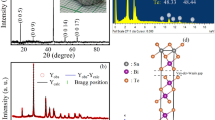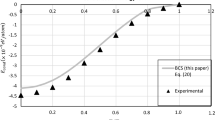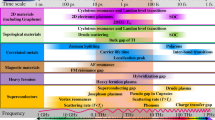Abstract
A recent paper of Capone et al. has studied an extended Hubbard model, in which local orbital degrees of freedom allow an even integer occupation at each site. A strong local repulsion U triggers a metal-insulator transition. Within a DMFT numerical analysis they show that when the ground state is a singlet a pocket of s-wave superconductivity appears in the vicinity of the Mott transition, with a strongly enhanced superconducting gap. A qualitative understanding of their result is proposed, and suggestions are made of possible systems in which this beautiful effect might be searched.
Similar content being viewed by others
REFERENCES
A. Georges, G. Kotliar, W. Krauth, and M. Rozenberg, Rev. Mod. Phys. 68:13(1996).
M. Capone, M. Fabrizio, C. Castellani, and E. Tosatti, Science 296:4(2002).
See for instance A. Paramekanti, M. Randeria, and N. Trivedi, Phys. Rev. Lett. 87:217002(2001).
Ph. Nozières, Eur. Phys. J. B 6:447(1998).
Author information
Authors and Affiliations
Rights and permissions
About this article
Cite this article
Nozières, P. Can a Metal-Insulator Transition Induce s-Wave Superconductivity?. Journal of Statistical Physics 115, 19–30 (2004). https://doi.org/10.1023/B:JOSS.0000019826.53628.83
Issue Date:
DOI: https://doi.org/10.1023/B:JOSS.0000019826.53628.83




